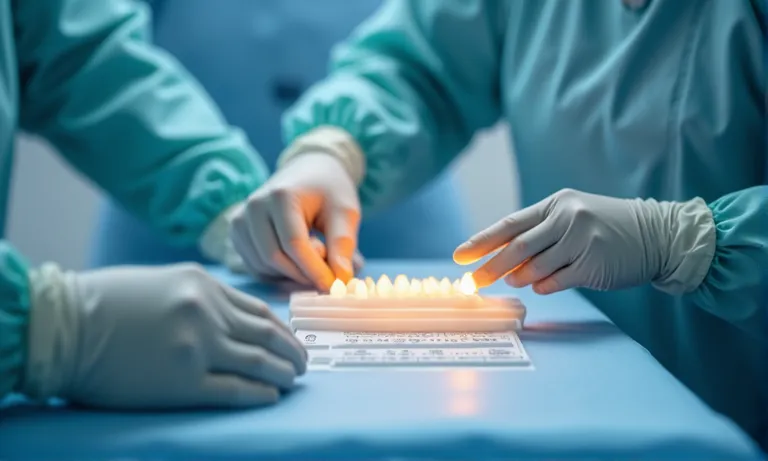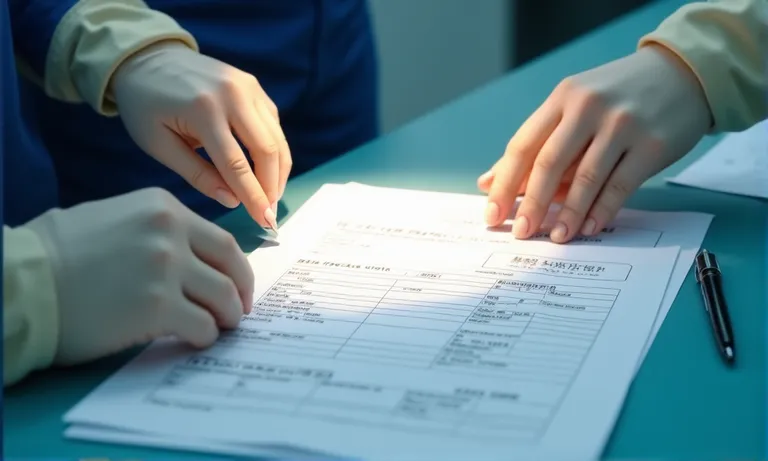Ordering crown and bridge restorations from overseas dental labs can deliver major benefits—lower costs, increased capacity, and access to advanced technologies. But with those gains come complex logistics risks: poorly coordinated shipments, packaging mistakes, customs delays, and unclear responsibilities can all lead to missed deadlines, remakes, and patient dissatisfaction.
This guide helps procurement teams, lab managers, and clinical buyers navigate the hidden challenges of international shipping. You’ll learn how to:
- Prevent common causes of shipping delays, including documentation errors and holiday backlogs
- Ensure proper packaging, tracking, and temperature control for crown and bridge cases
- Clarify insurance responsibilities and what happens when cases are lost or damaged
- Streamline communication across time zones and shipping stakeholders
- Verify compliance with international documentation and dental material regulations
- Evaluate lab partners based on proven logistics performance and transparency
Whether you’re testing a new overseas partner or scaling an existing workflow, this article gives you the clarity and structure to improve delivery reliability—and reduce costly surprises.
Why Logistics and Shipping Are Critical When Outsourcing Crown and Bridge Orders
When outsourcing crown and bridge restorations to overseas labs, logistics isn’t a secondary concern—it’s a core success factor. Turnaround time, remake risk, and even patient trust can hinge on how well international shipments are coordinated, tracked, and protected. Inconsistent transit performance can turn a cost-saving strategy into a clinical liability. That’s why logistics planning must be integrated into lab selection and workflow design—not treated as an afterthought.

dental-lab-international-shipping-importance
How do logistics delays affect turnaround time and patient satisfaction?
Delays in shipping are not just operational setbacks—they directly impact patient experience. When a crown doesn’t arrive on time, re-scheduling chair time, managing patient expectations, or fitting a temporary restoration longer than intended becomes necessary.
These disruptions can lead to:
- Loss of trust in the clinic
- Last-minute appointment cancellations
- Additional labor costs for staff managing reschedules
From our lab-side experience, we’ve seen how even a 48-hour delay at customs can trigger a cascading effect—where a final delivery misses the patient’s appointment window, and the entire case must be reworked due to gingival changes.
Why are crown and bridge cases more vulnerable to shipping issues than simpler restorations?
Compared to night guards or temporary units, crown and bridge restorations are:
- More delicate: Porcelain layering and fine margin edges are prone to chipping or distortion in transit if mishandled.
- Tightly timed: Often tied to a patient’s follow-up appointment or planned prep/fitting date.
- Less replaceable: Unlike a mass-produced item, these are customized to a specific patient prep and cannot be swapped or adjusted easily.
- Sensitive to environmental factors: High humidity or heat during air cargo transit may affect certain temporary cements or resin layers.
These vulnerabilities mean that logistics must be precisely aligned with lab timelines and clinical schedules, especially for anterior or implant-supported units.
What common logistics problems occur with international dental outsourcing?
Based on our ongoing work with dental clinics in North America, Europe, and Australia, we commonly observe:
- Customs clearance delays: Due to missing documentation, vague item declarations, or local regulation mismatches.
- Packaging failures: Inadequate cushioning or labeling results in chipped restorations or mixed-up units.
- Holiday or weekend bottlenecks: Shipments arriving near local or destination country holidays often get delayed without notice.
- Tracking disconnects: Using non-integrated couriers or misaligned tracking platforms causes status blind spots for the clinic.
- Return coordination issues: When cases need adjustment, reverse shipping without predefined protocols adds 3–7 days.
One client in the UK told us: “We once lost two days because the airway bill didn’t match the declared contents. It looked like a customs risk—even though it was just mislabeled.”
What Shipping Delays or Disruptions Should Buyers Expect?
Even when production runs smoothly, international shipping can introduce unexpected delays that compromise chairside timing and patient expectations. Understanding which disruptions are common—and which are preventable—can help procurement teams set realistic timelines and choose partners who plan ahead. In international dental logistics, visibility and preparation are your best safeguards.

dental-lab-shipping-delays-risk-factors
How can customs inspections or documentation errors lead to delivery delays?
One of the most frequent causes of delay in overseas dental shipments is customs hold. Even a minor documentation mistake—such as inconsistent HS codes, vague item descriptions, or an unrecognized commodity classification—can flag a shipment for manual review.
For dental prosthetics, mislabeling can raise questions such as:
- Are these considered medical devices or general goods?
- Do materials require certification or proof of sterilization?
- Is patient data referenced in the declaration, raising privacy issues?
We’ve seen cases delayed up to 3 business days simply because the airway bill listed “dental supplies” instead of “custom dental prosthetics (non-implantable).” Labs experienced in export documentation typically follow pre-approved templates aligned with destination country requirements.
What external disruptions—like holidays or port congestion—are high risk?
Several recurring patterns can create delays even when documentation is perfect:
- National holidays: Especially during Lunar New Year (China), Golden Week (Japan), or year-end in Western markets. Transit and customs both slow down.
- Port congestion: Overload at major hubs like LAX, JFK, Hong Kong, or Frankfurt can delay customs handover and handoffs to local couriers.
- Severe weather: Typhoons in Asia-Pacific, snowstorms in Europe or North America frequently ground time-sensitive shipments.
- Regulatory changes: Sudden changes in import policy, VAT rules, or new dental material classifications (e.g., lithium disilicate) may hold up customs.
- Carrier re-routing: Due to fuel surcharges, labor strikes, or package category prioritization (e.g., COVID-related medical goods).
If your cases are time-sensitive—such as a patient scheduled for surgery prep or full arch insertion—these risks must be factored in, even if they occur <10% of the time.
How should buyers plan buffer time to mitigate delivery uncertainty?
A practical mitigation plan involves three steps:
- Set conservative turnaround expectations internally
Don’t promise “5-day” lab cycles to patients. Instead, build in a 2–3 day logistics buffer beyond lab production time, especially for international cases. - Identify high-risk shipping windows
Work with your lab to map out known disruptions (e.g., Chinese holidays, local port bottlenecks) and avoid patient scheduling near those zones. - Pre-book contingency slots
For high-value cases, reserve secondary chairside appointments or carry in-office temporaries that allow flexibility in delivery variance.
In our experience supporting DSO clients, those who shifted from “same-week delivery” assumptions to “9-day logistics-inclusive” planning reduced urgent remake requests by 16% over two quarters.
How Should Dental Labs Package and Label International Shipments?
Proper packaging and labeling aren’t just about presentation—they directly impact restoration safety, shipping compliance, and customs clearance. Overseas crown and bridge shipments travel thousands of miles, often across varying climates and carrier systems. Labs that standardize their packaging protocol significantly reduce the risk of fractures, mix-ups, or customs holds. Here’s how to do it right.

dental-lab-packaging-standards-for-overseas-shipping
What packaging practices protect delicate crown and bridge restorations in transit?
Dental prosthetics—especially crown and bridge units—require protective, compartmentalized packaging with physical shock resistance and material separation. Best practices include:
- Foam-lined rigid containers: Prevents chipping and compressive damage, especially for layered zirconia or PFM crowns.
- Unit-level isolation: Each case labeled with patient ID, tooth number, and restoration type in a sealed mini-bag or tray.
- Moisture absorbent material: Desiccant packets (e.g., silica gel) to protect against humidity during long-haul air shipping.
- Tamper-evident seals: Ensures the package was not opened en route—important for chain of custody in regulated markets.
- Return-prepared inserts: Include pre-printed return labels and foam compartments for remakes or adjustments, avoiding repacking errors.
In one recent case, a U.S.-based clinic reported chipped connectors on three bridge units shipped without internal cushioning. After switching to layered foam trays with corner reinforcements, the lab eliminated such incidents in the next 80+ shipments.
Are moisture or temperature controls needed for overseas shipments?
While crown and bridge restorations generally do not require active refrigeration, certain scenarios call for climate-aware packaging:
- Extreme humidity routes (e.g., Southeast Asia to U.S. Gulf Coast): Include desiccants to prevent microcracks in layered ceramic/glass-based materials.
- Winter air cargo (e.g., transatlantic shipments in unpressurized holds): Consider insulating wraps to reduce thermal shock risk for long-span bridges.
- Acrylic temporaries or composite substructures: May soften under prolonged heat if not protected.
For most routes, passive protection (silica gel + thermal insulation) is sufficient. Active temperature-control is rarely needed, unless biologic components (e.g., PMMA test units or digital impression data carriers) are involved.
What packaging or labeling standards/certifications should labs follow?
| Standard / Label | Purpose | Common Use |
|---|---|---|
| Fragile / Handle with Care | Signals priority handling for manual sorting | All ceramic or esthetic cases |
| HS Code & Commodity Description | Required for customs classification | “Custom dental prosthetic, non-implantable” |
| Patient ID / Case Info Label | Links case to prescription and STL file | Ensures traceability in multi-case shipments |
| CE / ISO Markings (if applicable) | Shows conformity with quality standards | For EU-bound or regulated destination markets |
| Moisture Indicator Strip | Verifies environmental condition in transit | Optional for long-haul or high-humidity zones |
Labs that consistently follow these labeling and packaging steps report fewer delays, lower return rates, and faster case reconciliation—especially for multi-unit shipments with mixed case types.
What Tracking and Insurance Measures Are Essential?
Even the best-made prosthetics lose their value if they don’t arrive intact and on time. That’s why logistics confidence—especially across borders—depends not only on packaging but also on real-time tracking and appropriate risk coverage. In international dental outsourcing, visibility and accountability are non-negotiable.

dental-shipment-tracking-and-insurance-measures
What shipment tracking options should international labs provide?
A reliable overseas lab should offer full transparency of the case’s location and status from dispatch to delivery. Common and expected tracking capabilities include:
- End-to-end tracking numbers: Linked to global couriers like FedEx, DHL, UPS, or EMS.
- Digital dashboard access: Centralized portal showing all in-transit and delivered cases, often integrated with case management platforms.
- Status notifications: Auto-email or app alerts when a shipment clears customs, goes out for delivery, or experiences delays.
- Photo logs of outbound packaging: Visual verification of package condition and labeling before dispatch.
- Local courier traceability: For the last-mile delivery, particularly when using third-party logistics in the receiving country.
One Raytops Dental Lab’s client in Australia noted a 13% reduction in “where’s my case?” emails after implementing dashboard-based tracking across their 8-chair clinic group.
Who bears responsibility if a dental case is lost or damaged?
Responsibility typically depends on the shipping terms agreed in the service contract or SLA. Most international shipping arrangements fall under these scenarios:
- Free Carrier (FCA): Buyer assumes risk once the lab hands over the shipment to the carrier. This is common in cross-border logistics.
- Delivered Duty Paid (DDP): Lab bears full risk until the shipment is delivered to the buyer’s site. Less common due to complex cost absorption.
- Declared Value vs. Full Insurance: Even if a shipment is technically covered, compensation may be capped if declared value is not set properly.
It’s crucial that buyers confirm at what point liability transfers—this should be clearly stated in the lab’s policy or agreed SLA. In unclear cases, this becomes a reputational and trust issue—regardless of technical liability.
Should buyers require insurance coverage for high-value or urgent cases?
| Scenario | Recommended Action | Why It Matters |
|---|---|---|
| High-value case (full arch, zirconia) | ✅ Add shipping insurance + set declared value | Replacement costs and remake time are high |
| Time-sensitive surgery delivery | ✅ Use priority courier with insurance | Missed appointments damage both patient trust and cost |
| New lab relationship | ✅ Use insurance until logistics reliability is proven | Build confidence while reducing financial risk |
| Repeated low-value posterior units | ❌ Insurance optional; focus on packing & tracking | Cost of insurance may outweigh risk |
Not all buyers request insurance—but those who’ve faced even one “lost arch” often never go without it again. As one client told us, “Shipping insurance is cheap compared to chairside disruption.”
How Can Clear Communication Reduce Logistics Issues?
Even the best lab or courier can’t overcome poor communication. Most logistics delays in crown and bridge outsourcing aren’t caused by transport—they begin at the intake desk or Rx upload. When roles, expectations, or details are unclear, shipment problems follow. To reduce risk, communication protocols should be as standardized as the fabrication process.

dental-lab-logistics-coordination-and-communication
What logistics details must be confirmed during order intake or Rx submission?
Front-end clarity reduces back-end chaos. Key logistics points that must be confirmed before production starts include:
- Correct shipping address and recipient: Especially important for multi-site clinics or DSOs; mislabeling leads to rerouting or loss.
- Expected delivery window and clinical due date: Define production + transit buffer to avoid last-minute panic.
- Courier preferences or restrictions: Some clinics don’t accept packages from certain carriers or have specific delivery time slots.
- Customs documents or patient material declarations: Certain countries require specific formats or product descriptions.
- Return logistics: Include clear instructions for adjustments, remakes, or diagnostic returns.
In our experience, labs that collect these 5 data points during intake reduce reshipment requests by up to 14% within 3 months.
Who is the designated point of contact for shipping coordination?
Without a clearly defined logistics contact, issues fall into inbox limbo. A dedicated point of contact (POC) ensures fast clarification and accountability. Ideally:
- From the lab side: The same logistics coordinator handles outbound shipping, tracking issues, and return case coordination.
- From the clinic side: One person (often procurement or lead assistant) is responsible for receiving, reviewing, and reporting issues.
At Raytops, we’ve seen smoother resolution when both sides list a named contact directly in the case sheet or shared portal. When no one’s assigned, minor issues escalate into major delays.
Can shared dashboards or notifications streamline shipment status updates?
Yes—and they’re often underutilized. Shared digital tools make real-time visibility possible across continents. Effective practices include:
- Web-based case tracking portals: Buyers can log in anytime to see current status, without emailing back and forth.
- Automated notifications: SMS, email, or app alerts for milestone events (e.g., “case shipped,” “customs cleared,” “out for delivery”).
- Chat-based updates with time stamps: Avoids miscommunication over email threads or missed voicemails.
Some buyers even integrate shipment dashboards with chairside scheduling tools to reduce missed appointments and patient reschedules. For DSOs managing 10+ shipments a week, this is not a luxury—it’s a necessity.
What Compliance and Documentation Requirements Must Be Met?
Crown and bridge restorations cross borders like any regulated product—yet many dental teams underestimate the documentation required. Inconsistent labeling, incomplete declarations, or material ambiguity can cause customs delays or rejections. To prevent disruptions, labs and buyers must align on shipping compliance from the start.

dental-lab-export-compliance-documents
What import/export documentation is required for dental prosthetics?
International dental shipments typically require the following documentation:
- Commercial invoice: Details value, HS code, country of origin, and item description. For prosthetics, “custom medical device” or “dental crown/bridge restoration” is preferred language.
- Packing list: Lists physical contents and quantity of each unit.
- Material disclosure or MSDS: Some regions require verification of biocompatibility or metal composition (e.g., EU, Gulf states).
- Proof of manufacturer or FDA listing (if applicable): Particularly for the U.S., ensure the lab is registered if needed.
- Patient data compliance declaration: If shipment contains digital design files linked to patient identifiers, a data handling statement may be required under GDPR or HIPAA rules.
- Import country forms: Some countries (e.g., Brazil, India) require country-specific import registration documents.
Labs that pre-format these forms based on the buyer’s country dramatically reduce customs rejections and clearance time.
Are there material or patient data restrictions in overseas shipments?
Yes—and they vary by region. For example:
- Biological sample prohibitions: Some customs offices prohibit physical impressions unless labeled as “non-infectious diagnostic material.”
- Alloy or metal restrictions: Countries like Canada and Japan require clear labeling of Ni-Cr, Co-Cr, or other base metal content.
- Data sovereignty laws: Transmitting STL or DICOM files containing patient identifiers across borders may require anonymization or explicit consent documentation.
One Raytops client in the EU had a shipment delayed because scanned files included patient birthdates in file names—flagged by customs as PII.
When in doubt, anonymize all files before sending and consult with a cross-border logistics specialist.
How can buyers verify a lab’s adherence to international shipping regulations?
| Verification Item | What to Look For | Why It Matters |
|---|---|---|
| Document templates for your region | Pre-filled forms tailored to customs norms | Reduces back-and-forth and speeds clearance |
| Internal compliance officer or export coordinator | Named person responsible for logistics paperwork | Increases accountability |
| History of error-free international shipments | Ask for metrics (e.g., % shipments cleared without delay) | Quantifies experience and reliability |
| Certifications or registrations (e.g., FDA, CE) | Up-to-date documentation matched to shipping claims | Avoids regulatory mismatch |
| Data protection compliance | Processes for handling STL/DICOM with PII | Ensures legal safety for clinics and labs alike |
Labs that treat compliance as a value-added service—not just a checklist—build stronger relationships with professional buyers.
How to Choose a Lab with Reliable Global Logistics Capability
Choosing a lab that excels in crown and bridge manufacturing is only half the equation—their ability to deliver on time across borders is equally important. Even the best restoration loses value if it’s delayed, damaged, or rerouted. When vetting outsourcing partners, logistics capability must be assessed as rigorously as technical skill.

evaluating-dental-lab-logistics-capability
Has the lab worked with your region’s customs and shipping processes before?
Experience with your country’s import protocols significantly reduces the learning curve. Labs familiar with your local customs regulations, preferred couriers, and holiday schedules can prevent unnecessary delays. For example:
A Raytops client in New Zealand reduced turnaround by 7 days after switching to a routing plan the lab had already optimized for Australian-Pacific shipments.
Ask for region-specific references. A lab might be excellent in EU deliveries but inexperienced in South American channels.
Which logistics partners do they use, and are SLAs in place?
High-performing labs work with global logistics providers and have service level agreements (SLAs) in place. Key points to confirm:
- Courier partnerships: Do they use DHL, FedEx, UPS—or rely on third-tier forwarders?
- SLA metrics: Defined commitments for outbound handoff times, incident response, and lost case protocol.
- Time zone support: Are operations structured to sync with your clinic hours, or will communication lag overnight?
- Contingency planning: Do they have alternative carriers or rerouting strategies for high-risk periods?
Labs without defined SLAs may shift blame during disruptions. SLAs protect both parties and reduce conflict in critical moments.
Can they provide performance metrics—like average transit times and claim resolution rates?
| Metric | What to Ask | Why It Matters |
|---|---|---|
| On-time international delivery rate | % of overseas cases arriving within SLA window | Indicates reliability across borders |
| Average transit time by region | e.g., “US West Coast: 4.3 days | UK: 5.2 days” |
| Claim resolution timeframe | Avg days to resolve lost/damaged shipment | Measures responsiveness |
| Repeat logistics incidents | % of shipments flagged for the same issue | Reveals systemic gaps vs. isolated events |
| Client retention in overseas regions | How many long-term clients they support in your area | Indicates trust earned through logistics |
Labs that treat shipping as an extension of service—not just a handoff—tend to build longer, lower-friction partnerships.
Conclusion
Reliable crown and bridge outsourcing depends on more than just technical skill—it requires smooth, predictable global logistics. From customs paperwork to SLA-backed delivery, every step impacts clinical timelines and patient trust.
As an overseas dental lab with cross-border experience, we understand how to align production precision with logistical execution. For procurement teams, that means fewer surprises, clearer coordination, and consistent outcomes—even across oceans.
Choosing the right lab isn’t only about price or materials—it’s about dependable delivery, every time.


